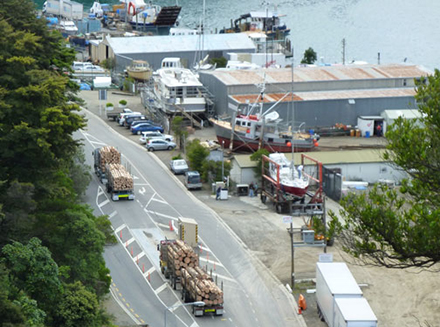New Zealand’s Forestry Industry Contractors Association is calling for an all of forestry strategy to deal with the mounting pressure on the entire New Zealand forestry supply chain, currently being highlighted by build-ups at the country’s major ports. Source: Timberbiz
The FICA says the situation is far from over and the sector needs to work together to find solutions.
Export market demand for New Zealand logs has been strong in recent months, putting extra pressure on our infrastructure, particularly at ports.
“I don’t think we have ever tried to deliver the volume of wood that we are, and we are finding out our infrastructure just can’t cope,” FICA CEO Prue Younger said.
The growing number of ships waiting to dock at multiple ports across New Zealand is a visible indication of the building supply chain pressure. Starting with Gisborne, build ups have reportedly spreading to Tauranga and Napier more recently. In the case of Gisborne, delays have been compounded by infrastructure upgrades to add a second berth and weather conditions.
Ms Younger says delays are not just happening at the ports; the entire forestry supply chain is under pressure and has been for some time.
“The delays are evident everywhere, from slow deliveries of imported gear such as personal protective equipment (PPE) and vehicles, to harvesting, trucking and shipping back-logs. The entire supply chain is being stretched,” she said.
“While pressure mounts, forestry contractors are caught in the cross-fire. They’re not receiving any compensation, with lost revenue mounting. Many are being stretched to the absolute limit financially.
“The latest log price drop is pretty typical of the cycle in logging, where we see prices reach new heights, then drop and stabilise to re-set the market.
“The issue is that as an industry, we are lacking a coordinated strategy. We’re just reacting without a plan of response. It’s like the weather – sometimes it’s good and sometimes it’s bad, but if we know the forecast, we can make appropriate plans.
“We talk about the need for a pan-industry strategy, but we don’t have one. We keep banging on about working together and through COVID, we did. We need to be coordinated and work together to better manage our supply chain, so we don’t get pulled into this boom or bust mentality yet again.”








